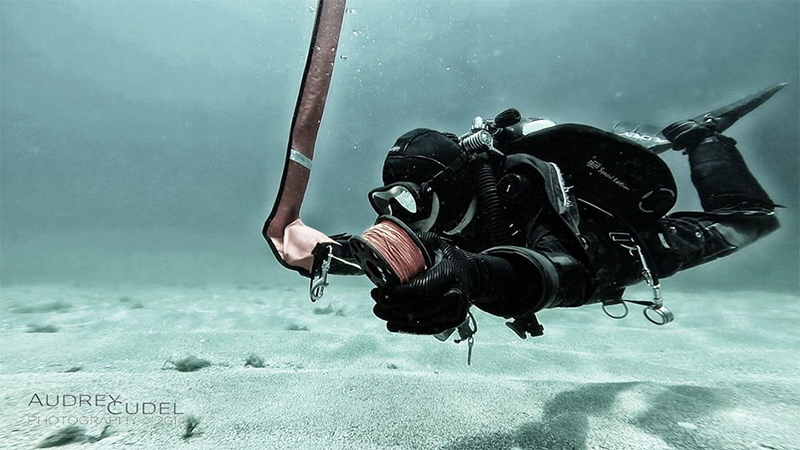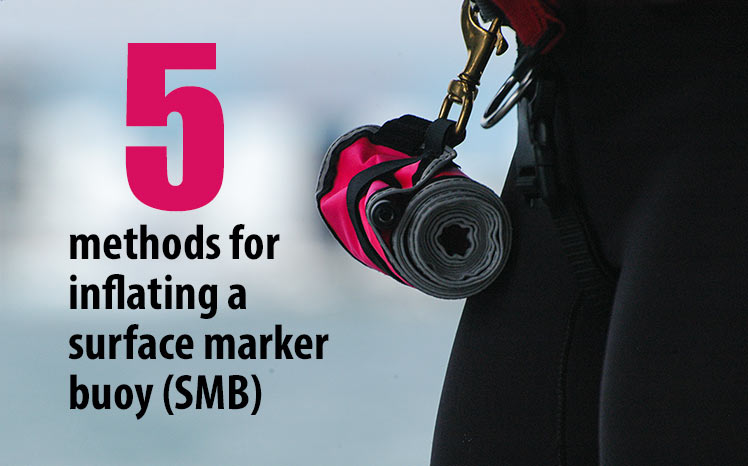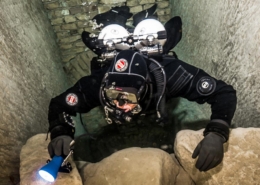The Secret Sauce for Surface Marker Buoy (SMB) Deployment
by Jon Kieren:
There is more than one way to skin a cat, so to speak. While often the subject of a very heated, quite humorous debate, technical diving is not exempt from this saying. One of the more common skills often debated is Surface Marker Buoy (SMB) deployment. There are many variations to performing this skill as well as selecting the equipment to use, but the overall objective remains the same: deploy an SMB on an ascent line without shooting yourself to the surface.
Because there are so many variations of SMBs, lift bags, reels, finger spools, etc., this article will focus on one specific aspect of deploying an SMB: methods for inflating the SMB.
- Regulator Second Stage: This is a common practice and makes it easy to add enough gas to the SMB in order for it to stand tall in the water and be easily noticed. However, it does have several drawbacks; for example, it’s never a good idea to intentionally free flow a regulator on a technical dive, especially in cold water, as it could result in a significant loss of gas.
- Primary Regulator Exhaust: This method is very quick and efficient, it does not require any special equipment and it is very popular. However, it should be noted it is far from perfect. It is difficult to tell if the exhaled gas is making it into the SMB, it is difficult to get sufficient gas into the SMB at a shallow depth without causing a significant buoyancy shift, and it requires the diver to hold the SMB close to their body when adding gas (increasing risk of entanglement).
- BCD Power Inflator: Extremely effective for rebreather divers who do not have an exhaust to inflate the SMB, this method is quick, does not require any special equipment, and makes it easy to add plenty of gas without creating a buoyancy shift. The diver simply places the exhaust of their BCD inflator into the bottom of the SMB and depresses both the inflate and deflate buttons simultaneously, releasing gas straight into the SMB. This method does have a couple of small drawbacks. Mainly that the SMB needs to be close to the diver’s body in order for the power inflator to reach and that if the diver does not depress the deflate button entirely, the gas may inflate the diver’s BCD, causing them to become positively buoyant.
- Oral inflation: One of the simplest methods of SMB deployment is using the oral inflation valve. The diver holds both the SMB and spool in one hand and removes their primary regulator from their mouth with the other hand and blows into the oral inflation valve. This works well when using a smaller SMB and a finger spool, but if you are deploying from depth you may need more line than is available on your finger spool. You will then need to use a primary reel, which is very difficult to manage along with the SMB, with one hand. It is also not appropriate for rebreather divers.
- Air Nozzle Low Pressure Inflator Attachment: Very popular with both open circuit and rebreather divers, the air nozzle attaches to a low pressure inflator hose and is typically rigged on a deco or stage bottle. The nozzle is used to blow gas into the SMB; it is very convenient and allows the SMB and reel to be held out away from the diver’s body. The main downside is it requires a special piece of equipment that adds an additional failure point.

Just recently I was on a tech boat and saw a fellow diver struggling to kit up on the boat, apparently the air nozzle on his deco bottle was free flowing. He was worried that if he needed to remove it, he would not know how to deploy his SMB without it. On a wreck in strong current at 60m/200ft is not the time to be attempting new SMB deployment methods.
The list continues on from here; however, I’m sure you can see that there are many variations to this critical skill. All of these variations have their own strengths and weaknesses, and a diver should choose a method that suits them best. No matter what method you decide on, it’s extremely important to receive proper training with a qualified instructor and practice until it is second nature.









 Natalie L. Gibb
Natalie L. Gibb
Skriv en kommentar
Vil du deltage i diskussionen ?Du er velkommen til at bidrage !